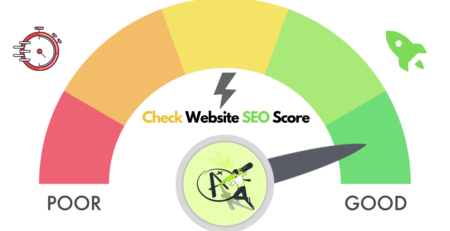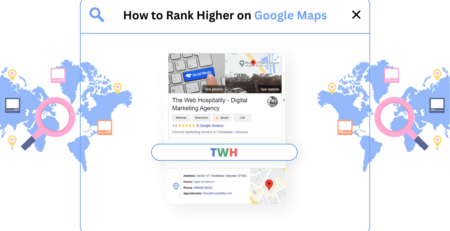The Working Professional's Guide to YouTube SEO
It’s also a lot of competition for YouTubers and brands. Harnessing YouTube SEO to increase rankings and views is essential.
Without it, videos don’t receive views and channels can’t grow. Entrepreneurs and businesses don’t get exposure and fail to progress.
Luckily, I’ve put together this straightforward guide that explains how to utilize YouTube SEO techniques, so you can learn how to rank YouTube videos.
It’s not an easy fix but by working smarter not harder, anyone can see success on YouTube.
Let’s dive in!
What is YouTube SEO?
Let’s start with the basics. SEO stands for Search Engine Optimization.
It’s the practice of adapting content using tried and tested techniques that will improve that content’s rankings on a search engine results page.
The techniques required to optimize content for a traditional search engine like Google differ from YouTube SEO techniques.
YouTube uses different metrics than Google to determine the quality and relevancy of a piece of content to a search query.
But some of these ranking factors overlap, so it’s absolutely possible for videos to rank well in both Google and YouTube!
Don’t worry if you don’t know what the differences are and how to optimize YouTube videos to rank higher in search results. I’m going to explain both and use examples.
How YouTube SEO Benefit Businesses?
As video content remains the most popular type of content for audiences, performing video SEO is more essential than website SEO.
Higher rankings on YouTube mean more clicks, engagement, and users
As YouTube continues to be the fastest-growing video sharing platform in the world, it remains the optimal spot for video content.
Since Google acquired YouTube in 2006, optimizing for YouTube can be an even more robust SEO strategy than any other form because Google has access to all the information and optimization presented with the videos.
Optimizing for YouTube is essentially optimizing for Google too.
How to Rank: YouTube Video Keyword Research
So, if I’m researching potential topics for a new video, I want to find keywords that have low competition from other YouTubers or brands.
But, I want keywords that people actually search for, so my videos have an audience.
Though I could use a keyword research tool, this is a way to find the right keywords organically.
Step 1: Generate Keyword Ideas
YouTube auto-suggests phrases that users have already searched for e.g., “Premiere Pro Tutorial” and “Premiere Pro Text Effects.”
I could also pick a handful of competitors within the video editing niche, look for their most popular videos, and see what keywords they’re using.
I can spot keywords by looking for repeated phrases in their video’s title, tags, and description.
And those are just two ways to find great keywords!
Step 2: Check Keyword Competition
I want to strike a balance and choose a keyword phrase that has a decent number of search queries but not a lot of competition.
If I type “premiere pro” into Google, I receive Google’s search results which prioritize text results. If I switch to the Video results page, this will show me results from YouTube.
But for some search queries, Google’s standard search results page includes videos as well as text when it’s likely that the user wants a video result.
So, I want to pick a keyword that already gets video results on Google’s standard results page.
I also want to pick a keyword that (approximately) receives less than 1,000,000 results in Google, so the competition is low.
Once my YouTube channel attracts more subscribers and views, I can try higher-competition keywords.
I’m going to choose “Premiere Pro Transitions Tutorial” as my keyword phrase because it meets these guidelines perfectly.
How to Optimize: YouTube Video Elements
To successfully optimize my YouTube videos, I have to use that keyword in the best way if I want more people to watch my awesome videos.
I’m going to show you how to do YouTube SEO properly, considering all the different elements.
Step 1: Optimize The Title
I should try and put my keyword at the beginning of the title as long as it makes sense according to the video.
I want YouTube to know it’s my video’s focus, but I also want my title to encourage viewers to click on it.
Step 2: Optimize The Description
But only where relevant as I don’t want to appear spammy.
My description should also be at least 250 words long. Within it, I will entice viewers with a summary of the video but not give away the great content within the video.
I’ll also be helpful and include links to any products or services I mention.
Step 3: Optimize Tags
One of my tags will be “Premiere Pro Transitions Tutorial” but I will also include variations like “Transitions in Premiere Pro” and “Adobe Premiere Pro Transitions.”
I will also tag secondary, but still relevant, keywords like “Premiere Pro Tutorial” and “Premiere Pro Skills”. These phrases are still connected to my keyword but cast a much wider net.
Tagging my video correctly will help it to appear in the “suggested videos” section of YouTube as well as search results. And that is definitely what I want!
Step 4: Optimize The Thumbnail
That means I need to make my thumbnail as eye-catching as possible to improve my YouTube SEO!
It’s always a good idea to create a custom thumbnail. That way, I have control over what my viewers see and can make it an enticing, exciting image.
The thumbnail should be at least 1280×720 because modern videos use a 16:9 aspect ratio. It should be under 2MB and can be formatted as a JPG or PNG file.
Step 5: Optimize the Channel Page
If viewers enjoy the Premiere Pro video content I’m posting, they may want to subscribe to my channel and see what else I’ve posted.
So I want them to find a great profile picture, eye-catching channel art, and well-organized playlists.
I could also attract new viewers by optimizing my channel page’s description.
My niche is video editing tutorials with Premiere Pro, so I should include my top niche keywords.
Those keywords could be “Premiere Pro Tutorials” and “Premiere Pro for Beginners.”
More YouTube SEO Techniques
Technique 1: Create Videos With High Audience Retention
I want my viewers to be hooked by my videos until the very end. 20% of viewers stop watching a video after 10 seconds, and I definitely don’t want that happening to me!
These are some audience retention techniques:
- Start the video with a quick summary of the video’s content
- Remove overly long introductions
- Entice viewers with something coming later in the video
However, just because 20% of viewers drop out after 10 seconds, it doesn’t mean I should create a 1-minute long video! Actually, YouTube loves long videos.
But one hour, for example, is way too long for my “Premiere Pro Transitions Tutorial.”
It’s important to remember that the length of my video isn’t that vital when it comes to YouTube SEO. My video should be just as long as it needs to be.
Technique 2: Ask Viewers to Like, Comment, and Subscribe
That’s why at the end of my video I’m going to remind viewers to do either one of these three things to help my channel grow.
I could create a clip to add to the end of each video with this information, so I don’t have to repeat it again and again.
Technique 3: Add Cards to Videos
Adding cards directing viewers to other videos I’ve posted encourages them to check out more of my content, but too many can be annoying.
So, I usually only use cards at the end of my videos. I’ll only link to another video in the middle if I mention it.
More Important YouTube SEO Techniques:
- Rename the video file with the keyword before uploading
- Speak the keyword within the video’s content
- Upload subtitles to improve the video’s accessibility
YouTube SEO Will Help Your Videos:
- Get More Subscribers
- Make More Revenue
- Monetize Your Videos
- Grow Unique Views
- Achieve Higher Organic Rankings
- Achieve More extra Engagement
- Appear in The Recommendations of ‘Suggested Video’
Equip Yourself With Powerful YouTube SEO Tools
Consequently, here is a collection of some best-breed YouTube SEO tools that you must check out.
YouTube Analytics
It’s essential to start this list with YouTube Analytics because it is irreplaceable in understanding your audience and how they engage with your videos.
It should be mentioned that YouTube recently shifted from “Creator Studio” to the simpler and more intuitive “YouTube Studio Beta.”
This tool provides information about the overall performance of the channel and data on specific videos.
YouTube Analytics also allows you to uncover the viewing habits of your audience, investigate their demographics, and identify where the traffic originates from.
The updated version of YouTube Analytics includes new metrics such as impressions, click-through rate, and unique viewers.
Furthermore, the new YouTube Analytics analyzes the latest video performance compared to earlier ones to track progress.
Awario
Additionally, linkless mentions will most likely earn more authority in YouTube’s ranking algorithm since they already exist as a ranking signal to Google.
To track and analyze the video’s social media and internet presence and search for more mentions and link sources, you can use Awario.
Fortunately, Awario can help you with both tasks. To understand the kind of buzz surrounding the video on social media, simply input the video’s URL when setting up the alert, or type in the researched keywords and track them with one alert (with the help of Boolean search).
This will help you find various opportunities to promote the videos.
Set specific tools to track YouTube results and carry out intense competition research to boost your rankings.
Additionally, you can link your YouTube account to Awario to be able to like and reply to comments directly from the tool.
Canva
It is a freemium graphic app that allows a tremendous selection of numerous templates for all kinds of visuals, including creative custom video thumbnails.
This app has one free version that is somewhat limited in terms of the specific number of templates as well as members.
However, if you choose to invest in any business-class account ($9.95 monthly for 1 user), you’ll acquire access to a tremendous image database of 100+ million images and the possibility to upload your fonts as well as color palettes.
TubeBuddy
TubeBuddy remains one of the free extensions that help with the work tenfold when it comes to YouTube channel management.
Because it’s an extension, and you can also operate on YouTube without switching to any other external app.
With the guidance of the TubeBuddy tool, you will be able to monitor the live video stats, track the social shares, and get the video optimization tips.
One of the most useful things regarding the tool remains that it presents all the above-mentioned data for each video on YouTube.
Therefore, you can view how your competitors optimizing their videos and analyze how your videos accumulate against your competition.
Rank Tracker
With the Rank Tracker YouTube SEO Tool, you can establish YouTube as a favored search engine and track rankings there, as well as monitor the video’s effects in SERP traits.
This tool also enables you to accumulate keywords using 23 keyword research techniques, including the YouTube autocomplete, and then compare them based on the most powerful SEO indicators.
As already mentioned, this tool is excellent at extracting video keywords and tracking them – you can identify the specific keywords that make the videos appear in organic search results.
Make sure to check out Rank Tracker’s exclusive YouTube Keyword Difficulty metric for quickly spotting easy-to-rank-for keywords.
How to Do YouTube SEO: Explained!
It’s not that different from any other web-based SEO practice. It still focuses on keywords at the core.
There are just some minor variations in YouTube SEO techniques and how to rank YouTube videos.
This guide explains everything you need to know about YouTube SEO.
But if you’d prefer an SEO marketing expert at TWH to take care of your keyword research and SEO implementation, find out more about our SEO packages.











